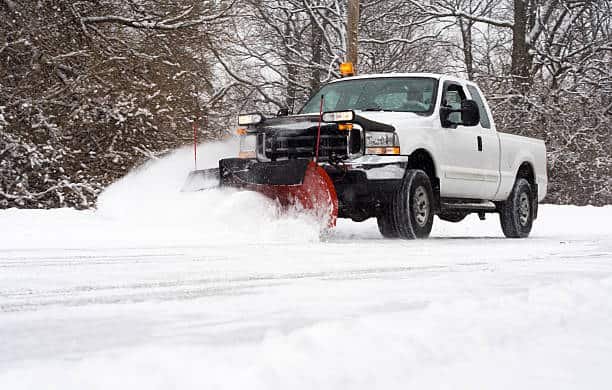Safety Recommendations for Winter Tires.
Once it comes to driving safely during the winter, your first worry should be the portion of your vehicle that makes contact with the road, which are the tires.
Because there are many choices available for winter tires, it may be difficult to determine which ones will work best for your vehicle and your driving conditions.
Discover the many choices available in the next section.
Snow Tires with a Performance Edge
If you utilize performance tires during the warmer seasons, performance winter tires could be something you want to look into.
According to Consumer Reports, these tires have a size and speed rating of H or higher, which indicates that they improve your vehicle’s ability to corner and handle better than regular tires might, even at speeds greater than 130 miles per hour (although traveling at such a high speed is not recommended).
In addition to this, they have a stronger grip on snow and ice than standard tires do, but not as well as ordinary winter tires, and their handling on dry terrain won’t be nearly as excellent as that of all-season performance tires.
Be sure to keep the following in mind while shopping for performance snow tires:
- Put snow tires on all four wheels of your vehicle, regardless of whether it has front-wheel drive, all-wheel drive, or rear-wheel drive, so that the vehicle’s performance is more evenly distributed.
- Maintain the proper level of tire pressure at all times.
- Before turning, use the brakes gradually and continuously. Don’t stomp on the brakes as hard as you can.
- Hold off on applying acceleration until the steering wheel is in a straight line and you have completed the turn.
- Tires for the Snow with No Studs
Studless snow tires are beneficial during the winter because they feature a deeper tread and more biting edges, which allows them to grip snow and ice more effectively.
They are often built of a softer rubber, which allows them to maintain their flexibility even in the lowest conditions, allowing the tire to continue to adhere to the curvature of the road.
However, according to Consumer Reports, winter tires do not have the same level of traction on dry ground as all-weather tires, and they wear out far more rapidly. When driving on snow tires, you should always:
- Check your tire pressure. The pressure in tires might shift due to cold temperatures.
- Put snow tires on all of the wheels, not just two of them.
- Before making the turn, use the brakes slowly.
- Hold your acceleration until you have completed the turn first.
- A set of studded snow tires
According to TireRack.com, individuals first began putting metal studs into their tires in the 1960s so that their tires would have better grip on ice.
Because the studs chipped away at the ice, even the most treacherous conditions were possible to be driven on, but the studs did damage to the pavement in areas where there was no ice present.
As a result of this, the use of studded tires is prohibited in a number of jurisdictions; thus, prior to using them, it is recommended to verify with the authorities in charge in the region. If you do decide to utilize them, keep these guidelines in mind:
Because studs make it easier for your automobile to get traction, you should go more slowly.
If you find that the studs are not helping, remove your foot from the gas pedal, carefully steer the vehicle in the direction you wish to travel, and then use the brakes.
Wheel Cogs or Tire Chains
Tire chains may be your best option for improving your traction while traveling in heavy snowfall conditions. In point of fact, some geographic regions need the use of tire chains whenever the weather meets specific criteria (and some prohibit chains, as they can be damaging to roadways).
When utilizing tire chains, be sure you adhere to the following safety recommendations from TireRack.com:
- If you want to install tire chains on all four tires, then you will need to purchase two separate sets of chains.
- Ensure that your chains fit your tires properly by purchasing the appropriate size.
- It is not necessary to deflate your tires in order to install the chains. The chains should be able to go over the tires after they have been suitably filled.
- Use chains that have an SAE Class “S” rating to ensure that they will not cause damage to your vehicle’s fenders, suspension, struts, brake lines, or bracing.
- Prepare the chains for usage before it really becomes necessary to do so.
- Always make sure your chains are stored safely in the trunk.
- After driving the vehicle approximately 15 feet, you should re-tighten the chains.
- Accelerate and decelerate in gentle increments, and avoid spinning your wheels.
- Keep your speed consistent with what the chain manufacturer recommends (usually under 30 mph).
- Do not get behind the wheel if your chains are broken.
- As soon as you reach an area where the road is clean, remove the chains.
Making a Choice About Purchasing Snow Tires
Snow tires are useful in a variety of conditions, not simply when there is snow on the ground. Nobody anticipates that motorists would go back and replace their tires each time the snow melts. Snow tires perform very well in snow, slush, ice, and water.
If you reside in an area that receives a significant amount of precipitation during the winter months, Bridgestone recommends that you make the investment in a pair of tires. Keep in mind, however, that once spring arrives, you should go back to using tires that are appropriate for all seasons in order to provide the highest level of potential driving safety.
Differences Between Manual And Automatic Vehicles
What Is The Best Way To Go To Catalina Island?
What To Wear When Mountain Biking?




